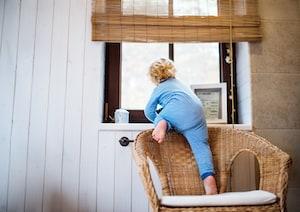Kids and Traumatic Brain Injuries

A traumatic brain injury is a disruption in the normal function of the brain that can be caused by a bump, blow, or jolt to the head, or penetrating head injury, according to the Centers for Disease Control and Prevention (CDC).
Brain injury is the leading cause of disability and death in children and adolescents. Those aged 0-4 and 15-19 years old are at most risk. Data shows that each year nearly 700,000 TBIs occur in children and adolescents ages <1–19 years in the U.S. And, between 2010-2013, there were approximately 4.1 million non-fatal brain injuries in children and teens.
Would you be surprised to learn that 72% of traumatic brain injury (TBI) related emergencies visits are a result of everyday activities (ex. playing sports and walking on uneven flooring) and everyday consumer products (ex. home furnishing and fixtures – tables, stairs, handrails, TVs, and bunkbeds; toys – scooters and skateboards; nursery equipment – car seats, beds, dressers and baby gates; and personal use items – footwear and pencils)?
A new study published in the journal “Brain Injury” found that the following 10 products have contributed to non-fatal TBI’s in children younger than 19-years old:
- Floors
- Beds
- Football
- Bicycles
- Basketball
- Ceilings and Walls
- Chairs
- Soccer
- Tables
An important warning to parents that improperly use car seats outside the vehicle like in the place of baby carriers – your child is at a greater risk for injury. When placed on a countertop there is an increased risk of a fall and injury. The report finds car seats are the fifth leading cause of TBIs in infants.
In order to reduce the risk of death, injury or a traumatic brain injury in children, parents should conduct regular home walk throughs and safety checks that are appropriate for the child’s age and development level. They are encouraged to make home improvements such as removing tripping hazards (rugs), improving lighting, and installing stair gates, handrails and guardrails. Parents and caregivers should teach and enforce home safety rules. They should ensure playground equipment is properly maintained, has soft landing surfaces and is age appropriate. Parents should require the use of sports protective equipment and gear like helmets, mouthguards and proper footwear. Most importantly, parents must remain educated and informed and adult supervision is key to prevention and ensured child safety.











